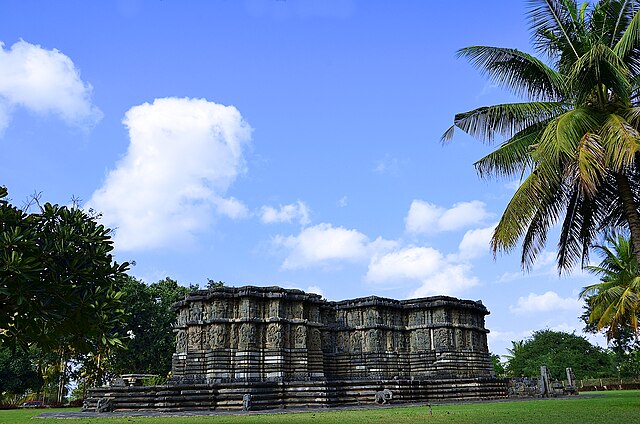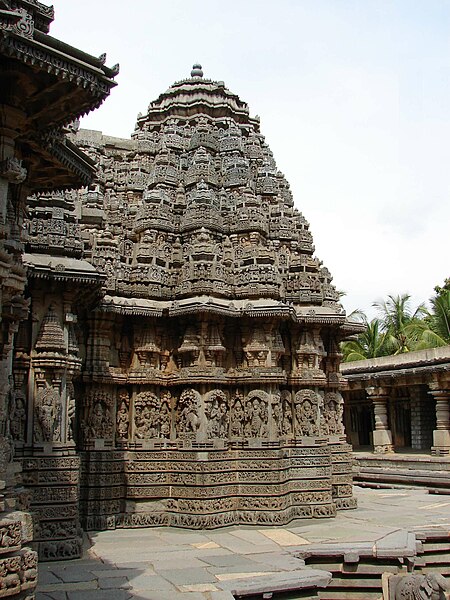Kedareshwara Temple, Halebidu
Kedareshwara Temple is a Hoysala era construction in the historically important town of Halebidu, in the Hassan district of Karnataka state, India. It is located a short distance away from the famous Hoysaleswara Temple. The temple was constructed by Hoysala King Veera Ballala II and his Queen Ketaladevi, and the main deity is Ishwara. The temple is protected as a monument of national importance by the Archaeological Survey of India.
Kedareshwara Temple, 1173–1219
Rear view of the Kedraeshwara temple at Halebidu
Stellate plan of shrine outer wall in the Kedareshwara temple at Halebidu
View of central domical bay ceiling supported by lathe turned pillars in the mantapa in the Kedareshwara temple at Halebidu
Hoysala architecture is the building style in Hindu temple architecture developed under the rule of the Hoysala Empire between the 11th and 14th centuries, in the region known today as Karnataka, a state of India. Hoysala influence was at its peak in the 13th century, when it dominated the Southern Deccan Plateau region. Large and small temples built during this era remain as examples of the Hoysala architectural style, including the Chennakesava Temple at Belur, the Hoysaleswara Temple at Halebidu, and the Kesava Temple at Somanathapura. These three temples were accorded UNESCO world heritage site status in 2023. Other examples of Hoysala craftsmanship are the temples at Belavadi, Amruthapura, Hosaholalu, Mosale, Arasikere, Basaralu, Kikkeri and Nuggehalli. Study of the Hoysala architectural style has revealed a negligible Indo-Aryan influence while the impact of Southern Indian style is more distinct.
Profile of a Hoysala temple at Somanathapura
Vishnu with Lakshmi (Lakshminarayana) at Halebidu
Shiva, Parvati, Nandi at Halebidu
Hoysala stepped temple tank (Kalyani) at Hulikere, Karnataka








